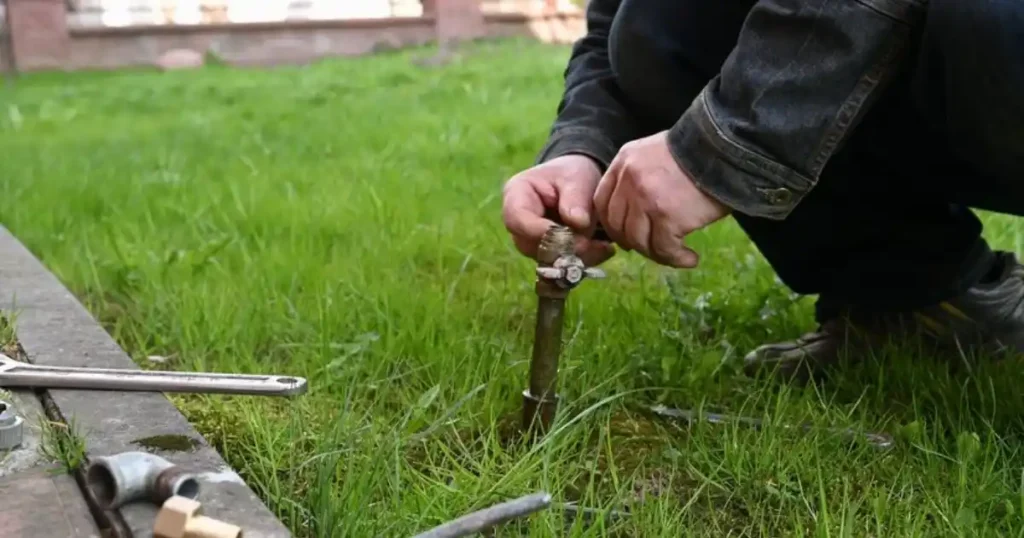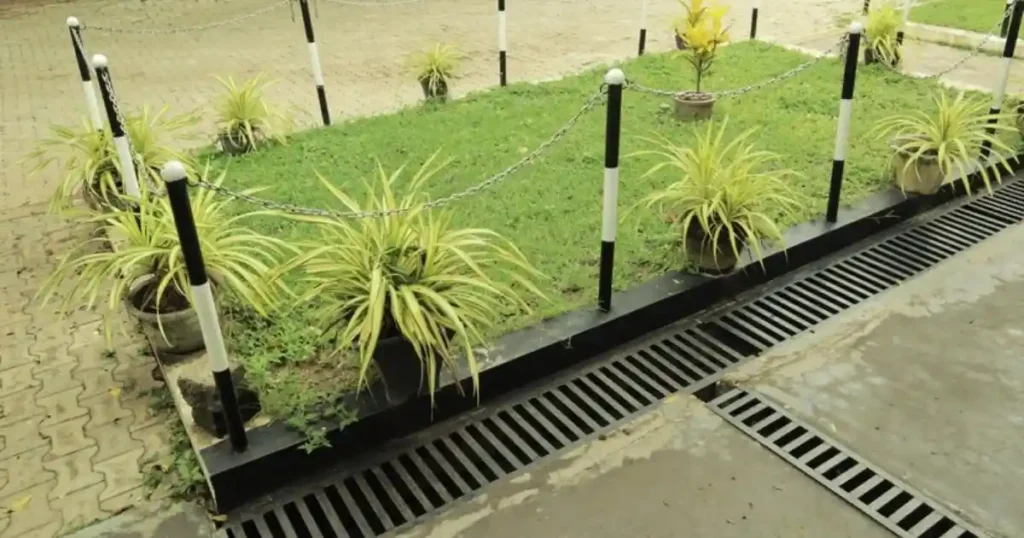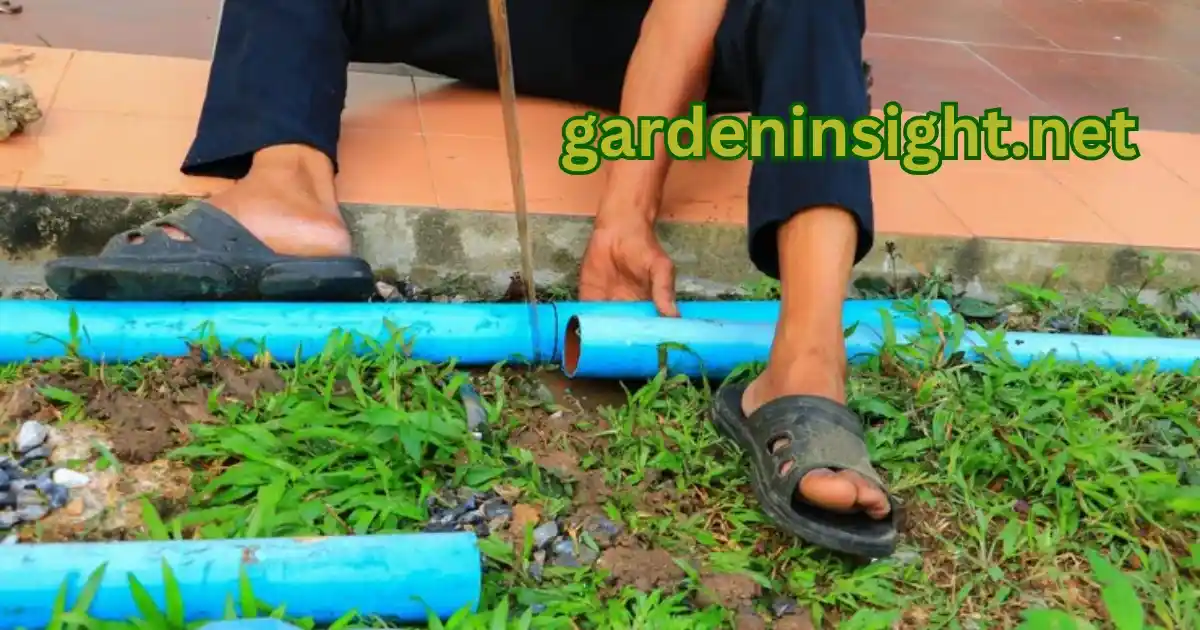A soggy garden can be a real headache for any homeowner. Not only does it make your outdoor space less enjoyable, but it can also damage plants and even threaten the foundation of your home.
The good news is that you can often solve drainage problems yourself with a bit of planning and effort.
This comprehensive guide will walk you through the process to install garden drainage, from simple solutions to more complex systems.
Understanding Your Drainage Needs

Before you start digging, it’s crucial to assess your garden’s drainage needs. Here are some factors to consider:
- Soil Type: Clay soil is notorious for poor drainage, while sandy soil drains quickly.
- Topography: Does your yard slope, or is it flat? Where does water tend to pool?
- Rainfall: How much rain does your area typically receive?
- Problem Areas: Are there specific spots in your garden that are consistently soggy?
Types of Garden Drainage Systems
There are several different types of garden drainage systems, each with its own advantages and disadvantages:
- French Drains: These are trenches filled with gravel and a perforated pipe that collects and redirects water.
- Surface Drains: These are grates or channels that collect surface water and direct it to a drainage system.
- Channel Drains: These are long, narrow drains that intercept water flow and carry it away.
- Dry Wells: These are underground pits filled with gravel that allow water to slowly infiltrate the soil.
Planning Your Drainage System
Once you understand your drainage needs and the types of systems available, it’s time to plan your drainage solution. This includes:
- Mapping Your Yard: Draw a simple diagram of your yard, noting the problem areas, the slope of the land, and the location of any existing underground utilities.
- Choosing a Drainage System: Select the type of drainage system that best suits your needs and budget.
- Gathering Materials: Make a list of the materials you’ll need, including pipes, gravel, fabric, and tools.
How to Install Garden Drainage Pipe
Installing drainage pipe is a common solution for redirecting water away from problem areas. Here’s a step-by-step guide:
- Mark the Trench: Use spray paint or stakes and string to mark the path of your trench. The trench should slope downwards to allow water to flow freely.
- Dig the Trench: Dig a trench that is wide enough to accommodate the pipe and gravel. The depth will depend on the type of pipe and the severity of your drainage problem.
- Line the Trench: Line the trench with landscape fabric to prevent soil from clogging the pipe.
- Lay the Pipe: Place the perforated pipe in the trench with the holes facing downwards.
- Backfill with Gravel: Surround the pipe with gravel, leaving a few inches of space at the top.
- Cover with Fabric: Fold the landscape fabric over the gravel.
- Finish the Trench: Fill the remaining space with soil and topsoil.
How to Install Yard Drainage
Installing yard drainage involves a similar process to installing garden drainage pipe, but it may require additional components, such as catch basins or dry wells. Here’s a general overview:
- Identify Problem Areas: Determine where water tends to accumulate in your yard.
- Plan the Drainage System: Choose the type of drainage system that best addresses your needs.
- Install Drainage Components: This may include digging trenches, installing pipes, catch basins, or dry wells.
- Connect to an Outlet: Ensure the drainage system has an outlet to discharge the water, such as a storm drain, ditch, or dry well.
How to Install Landscape Drainage Pipe
Installing landscape drainage pipe is often necessary to protect plants and landscaping features from excess water. The process is similar to installing garden drainage pipe, but it may require smaller diameter pipes and more careful placement to avoid disturbing existing plants.
- Plan the Drainage Route: Carefully plan the route of the pipe to intercept water flow and protect vulnerable plants.
- Dig the Trench: Dig a narrow trench, taking care not to damage plant roots.
- Install the Pipe: Lay the perforated pipe in the trench with the holes facing downwards.
- Backfill with Gravel: Surround the pipe with gravel and cover with landscape fabric.
- Complete the Trench: Fill the remaining space with soil and topsoil, blending it with the surrounding landscape.
How to Add Green Drainage

Green drainage solutions are becoming increasingly popular as they offer a more sustainable and aesthetically pleasing approach to managing water runoff. Here are some examples of green drainage:
- Rain Gardens: These are shallow depressions planted with native plants that absorb and filter rainwater.
- Swales: These are gently sloping channels that slow down and direct water flow.
- Permeable Paving: This type of paving allows water to seep through, reducing runoff and recharging groundwater.
How to Install a Garden Drainage System
Installing a complete garden drainage system may involve combining different drainage components to address various drainage issues. Here’s a general approach:
- Conduct a Thorough Assessment: Evaluate your garden’s drainage needs and identify problem areas.
- Develop a Drainage Plan: Design a system that incorporates appropriate drainage components, such as French drains, surface drains, and dry wells.
- Install the System: Follow the instructions for installing each component, ensuring proper connections and slopes.
- Test the System: After installation, test the system by running water through it to ensure it functions correctly.
How to Install a Yard Drain Box
A yard drain box, also known as a catch basin, collects surface water and directs it to a drainage system. Here’s how to install one:
- Choose a Location: Select a location where water tends to pool or flow.
- Dig the Hole: Dig a hole that is slightly larger than the drain box.
- Prepare the Base: Add a layer of gravel to the bottom of the hole for drainage.
- Install the Drain Box: Place the drain box in the hole, ensuring the top is level with the surrounding ground.
- Connect the Pipe: Connect a drainage pipe to the outlet of the drain box.
- Backfill with Gravel: Surround the drain box with gravel, leaving a few inches of space at the top.
- Cover with a Grate: Place a grate over the drain box to prevent debris from entering.
How to Do Drainage in Backyard
Drainage in your backyard may involve addressing various issues, such as poor soil drainage, surface runoff, or downspout discharge. Here’s a general approach:
- Assess Your Backyard: Identify the specific drainage problems you need to address.
- Choose Drainage Solutions: Select appropriate drainage methods based on your needs, such as French drains, surface drains, or green drainage solutions.
- Install the Drainage System: Follow the instructions for installing each component, ensuring proper connections and slopes.
- Maintain the System: Regularly inspect and clean your drainage system to ensure it functions optimally.
How to Build a Yard Drain System with No Slope
Building a yard drain system with no slope can be challenging, but it’s possible with the right approach. Here are some options:
- Pump System: Install a sump pump to collect water and pump it to a higher elevation or discharge point.
- French Drain with a Lift Station: A lift station can be used to pump water from a French drain to a higher elevation.
- Dry Well with a Pump: If your soil allows, a dry well with a pump can be used to collect and discharge water.
These solutions typically require professional installation and may be more costly than traditional gravity-fed systems.
Conclusion
To install garden drainage is a worthwhile investment that can transform your soggy yard into a thriving outdoor space.
By understanding your drainage needs, planning your system carefully, and following the proper installation techniques, you can effectively manage water runoff and protect your plants and property.
Whether you choose a simple French drain or a more complex system with multiple components, proper garden drainage will ensure a healthy and enjoyable outdoor environment for years to come.
FAQs
Some of the frequently inquired questions about ways to install garden drainage are given as follow:
What is the best way to drain a garden?
The best way to drain a garden depends on several factors, such as the soil type, topography, and severity of the drainage problem. Common solutions include French drains, surface drains, and green drainage solutions.
How do you install garden drainage system in clay soil?
Clay soil is notorious for poor drainage, so installing a drainage system is crucial. French drains are often the most effective solution for clay soil. Ensure the trench is deep enough and use plenty of gravel to facilitate drainage.
How do I stop my garden from flooding after rain?
To prevent garden flooding, install a drainage system that intercepts and redirects water away from problem areas. This may include French drains, surface drains, or channel drains. Also, consider adding green drainage solutions, such as rain gardens or swales, to absorb excess water.
Can I install garden drainage myself?
Yes, many garden drainage projects can be done DIY with careful planning and execution. However, for complex systems or if you’re unsure about any aspect of the installation, it’s best to consult a professional.
How much does it cost to install garden drainage system?
The cost to install garden drainage varies depending on the size of the area, the type of system used, and whether you hire a professional. DIY projects can be significantly cheaper, while complex systems with professional installation can cost several thousand dollars.
